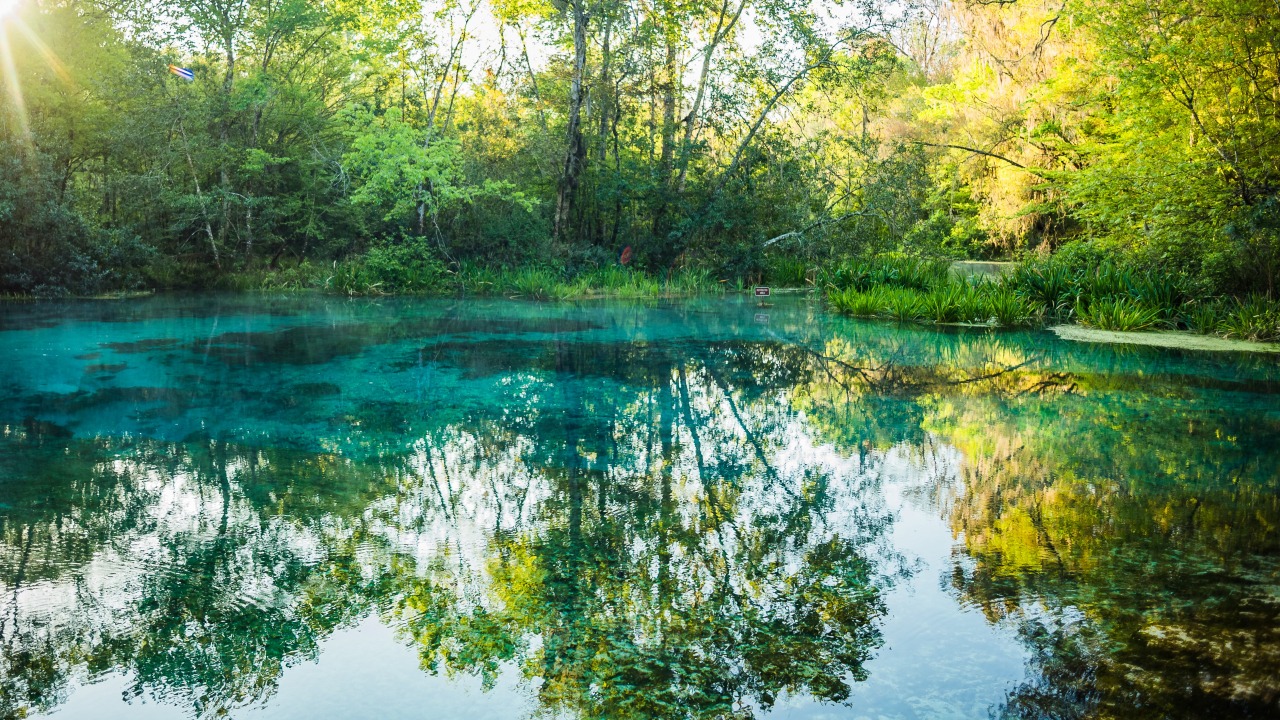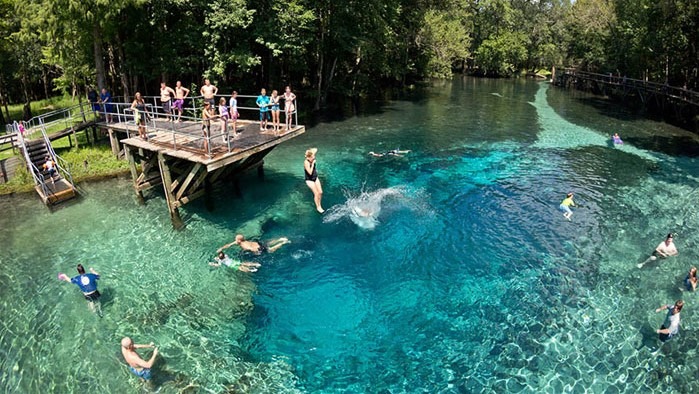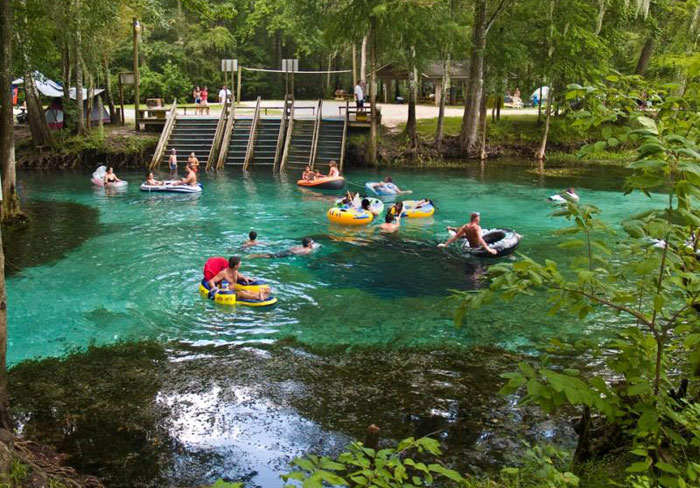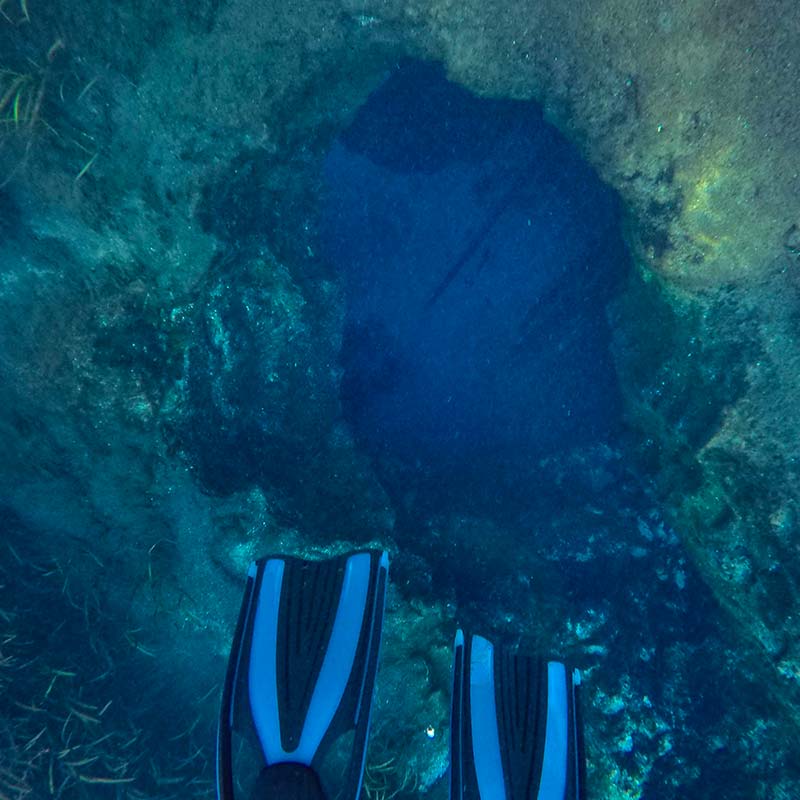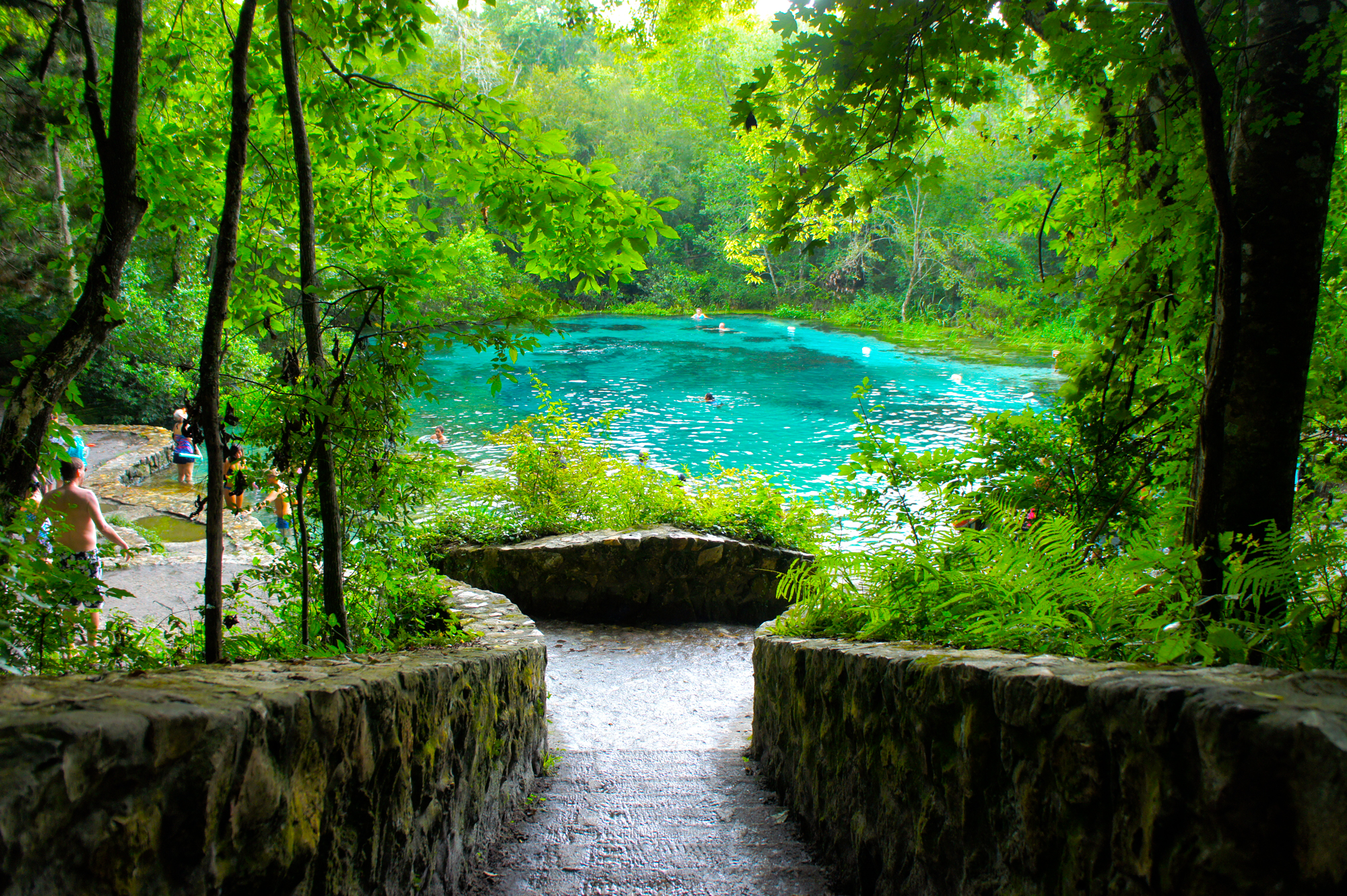By Kellilynn Hann
If you’ve never seen the natural springs in and around Columbia County, Florida, you’re missing out on some of the most beautiful (and fun) places to visit in the state. My family planned a three-day adventure to tour the area’s top 10 springs —where we discovered a whole new kind of playground.
Day 1: Columbia County Springs
Blue Springs
The water here is so clear you can see the fish. Not just the fish, though–it’s so clear you can see their shadows on the white sand below. It’s literally breathtaking. The pool goes from crystal, ankle-deep water to turquoise to cobalt blue at the center, which is 24 feet down and allows for safe diving off a platform. The morning was cool, so the water felt warm; it’s a comfy 72 degrees year-round.
Non-swimmers can enjoy the park too. In addition to a 50-yard (extremely soft) white sand beach, there’s a quarter-mile boardwalk that snakes along the spring run to the Santa Fe River, where we spotted water lilies, several species of fish, turtles, and a pair of anhingas snacking on minnows.
Amenities include restrooms, a snack bar, camping, picnic pavilions, hiking trails, and access points to the river for kayaking, canoeing, and fishing.
Best For: Swimming | Picnicking | Nature
Ginnie Springs
Crystal-clear swimming holes, lazy days canoeing or tubing down the Santa Fe River, nights around the campfire—Ginnie Springs is a family vacation dream.
The well-developed park centers around five springs, with Ginnie being the most popular for swimming and diving. The store rents diving equipment (provided you’re cave-certified), snorkel gear, canoes, kayaks, tubes, paddleboards and even volleyballs to use at one of the sand courts.
Best for: Camping | Tubing | Teens
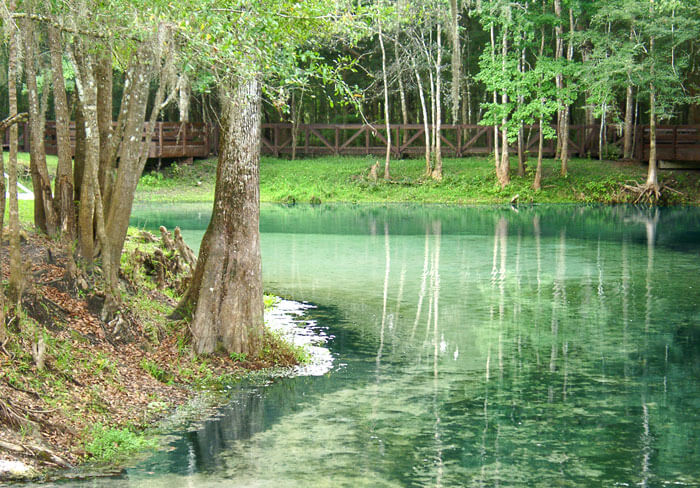
Poe Springs
Unlike the turquoise and cobalt colors of Blue and Ginnie springs, Poe Springs is a clear, sparkling green. The spring is accessed via a long boardwalk that winds among tall trees; it’s a very pretty walk in the shade.
The spring is shallow in most places which is great for the little ones to safely splash. The basin itself is about 25 feet down, which gave us grownups a chance to cool off in the deeper water.
We just had time for a quick dip and a picnic before we had to go, but the park has a lot of things to keep a family busy all day, including a playground, 1.5-mile hiking trail, volleyball court, and soccer and softball fields. There’s also a boat launch to access the Santa Fe River.
Best For: Swimming | Small Kids | Picnics
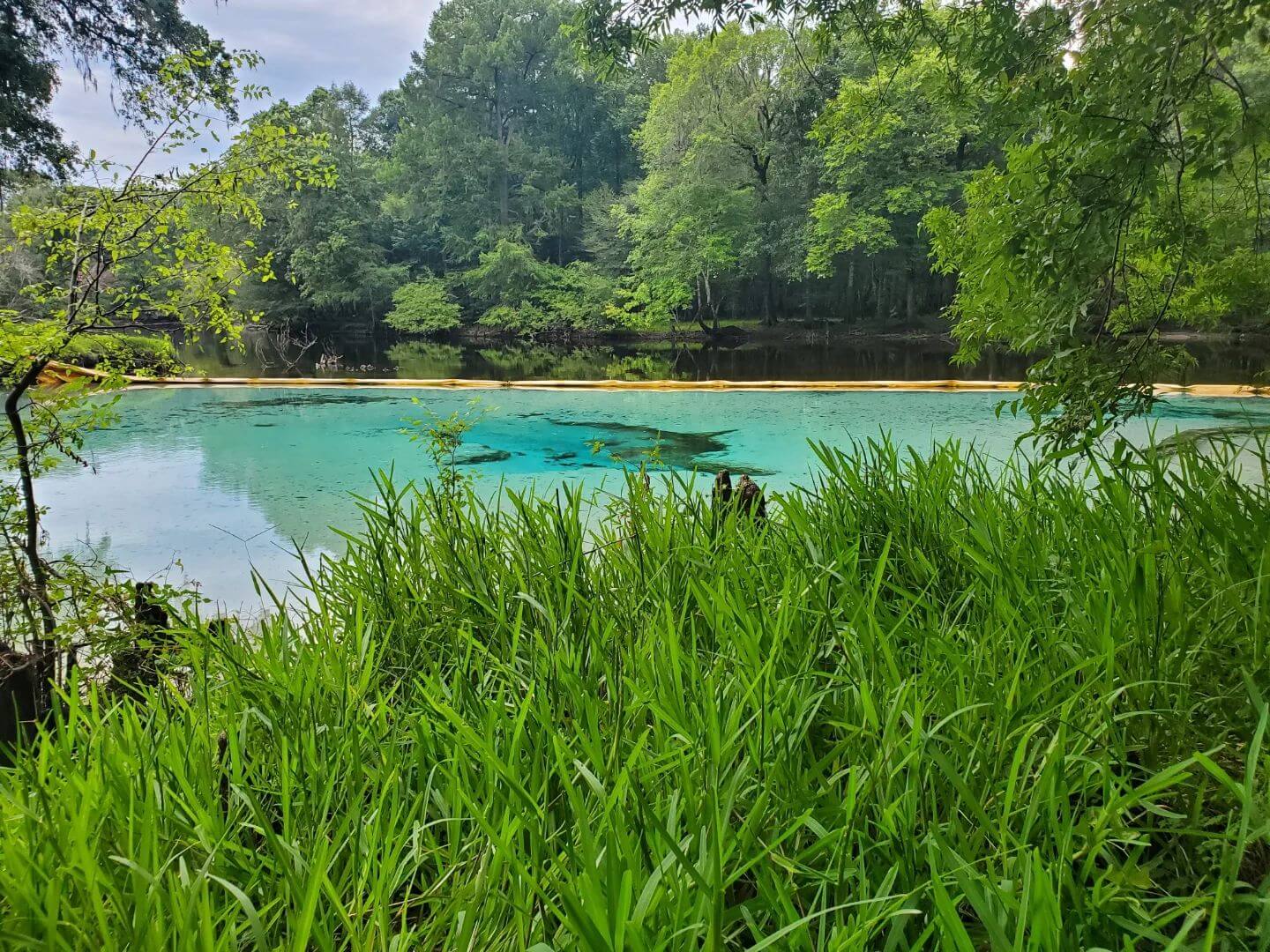
Rum Island Springs
We arrived at Rum Island Springs near sunset, and the light was bouncing off the cypress trees, making them look like metal sculptures. Here, the Santa Fe River is flat, wide and dark, and I was aching to launch my kayak and explore downriver. I’ve added it to my bucket list.
A concrete path takes you to the spring, which can vary in depth and color. On our visit, the spring was deep and rich brown, but it can also be shallow and clear green or blue. I was pleased to see a wooden ramp for handicapped access to the water. There are nearby canoe and kayak rentals, a boat ramp and a few picnic tables.
Best For: Kayaking | Canoeing | Fishing
Day 2: Ichetucknee Springs State Park
Blue Hole
Ichetucknee Springs State Park has been on my to-do list for years. The park has seven springs, but I most wanted to see the headspring and the famous Blue Hole.
The .3 mile walk to the Blue Hole is one of the most pleasant paths I’ve hiked. It starts with the boardwalk, then becomes a white sand path that curves under arching oaks and young palms that grow fluorescent in the filtered sunlight.
Blue Hole spring is pristine–surrounded by trees and ringed and bright green duckweed. Beneath the crystal-clear water, there’s a healthy carpet of eelgrass, thanks to restoration efforts and a strict no-wading rule.
A hotspot for diving, it has a 580-foot long cave system extending 35 feet down. Swimming is allowed, but the water is deep with strong currents, so we just drank in its beauty and relaxed.
Ichetucknee Head Spring
Once back in the parking lot, we followed a short path to the headspring (stopping to take a photo with the largest grapevine I’ve ever seen). It’s easy to understand why the spring is so popular–it’s large, turquoise blue and surrounded by lush greenery.
Inside the park is Paddling Adventures, where you can rent tubes in the summer. The best part: you can float lazily downriver and take the shuttle back! You can also rent kayaks, canoes, paddleboards and snorkel gear year-round.
Other activities include picnicking and hiking (it’s part of the Great Florida Birding Trail), with a playground and visitors center to boot.
Best For: Swimming | Diving | Tubing
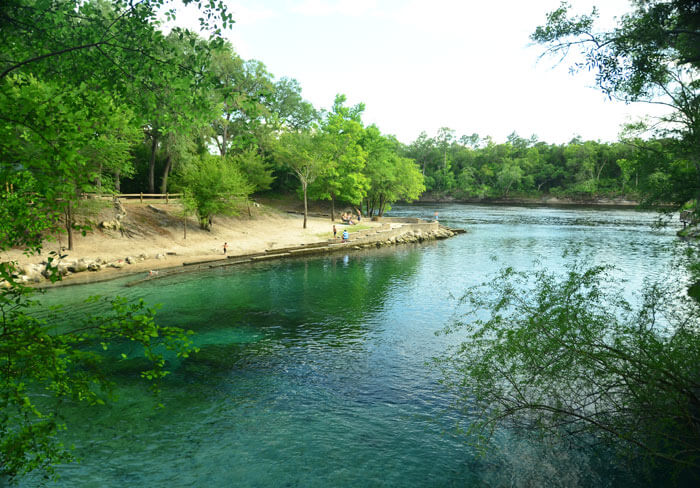
Little River Springs
These springs are a pleasant place, with concrete walkways and stairs around the spring, picnic tables, grills and a boat ramp. It was shallow and clear, but with a lot of limestone rock, so we kept our water shoes on. It was fun watching divers surface from the basin. Even though the pool itself is fairly shallow, it’s the entrance to a 1,200-foot cave system.
The spring empties into the Suwannee River, which is wide here, with lots of visible currents. We went into immediate exploring mode, all walking different ways along the river’s edge, picking up rocks, sitting on logs and enjoying the sunshine. We didn’t venture far, but there are 125 acres and many trails to explore, so will definitely be back.
Best For: Hiking | Wading | Diving
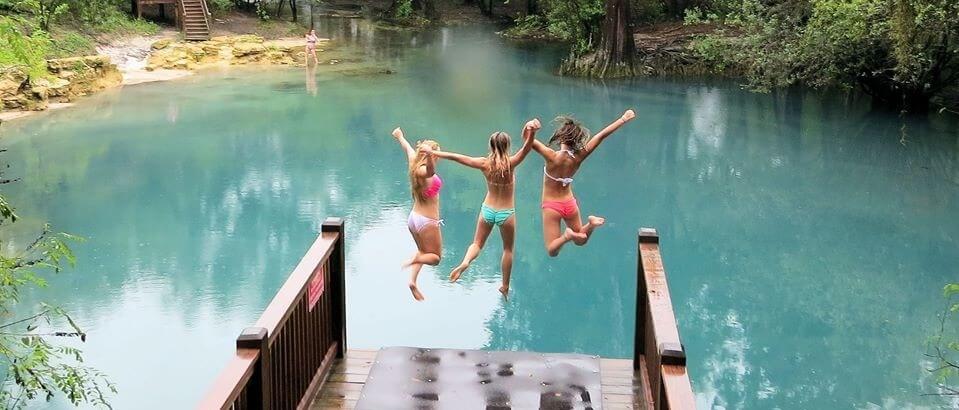
Royal Springs
Think of the classic summer swimming hole, and you’ll picture Royal Springs. The only developments are a few wooden staircases to the blue-green water and a jumping platform built over the 42-foot deep spring boil.
Everything else is a natural wonderland of trees, rocks and even a small waterfall, where the spring runs near the Suwannee. We followed trails through the woods, getting a spectacular view from high of the river and spring. The park is remote and quiet, with a few picnic tables and a boat dock. The limited amenities and remote location mean it’s less popular than other springs, so it can be a great option to escape the crowds.
Best For: Swimming | Exploring
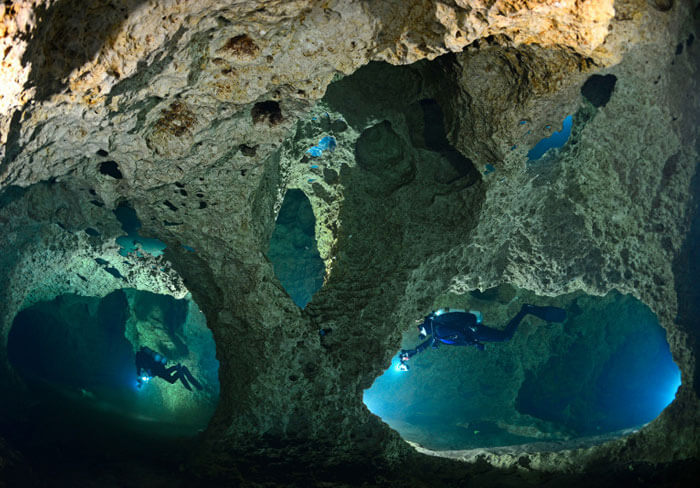
Wes Skiles Peacock Springs
Named after diver Wes Skiles, who pioneered cave diving safety practices, this park has one of the longest underwater cave systems in the country. Cave divers from all over the world come here to explore the nearly 33,000 feet of gorgeous caverns and passages.
You have to be a certified diver to go in, but the state created a 1.2-mile trail that follows the course of the caves. Along the path, there were signs with information and photos about the cave system. It was exciting to discover the wonders right below us, hidden under the carpet of pine needles. Amenities are limited, so plan accordingly.
Best For: Hiking | Certified Diving
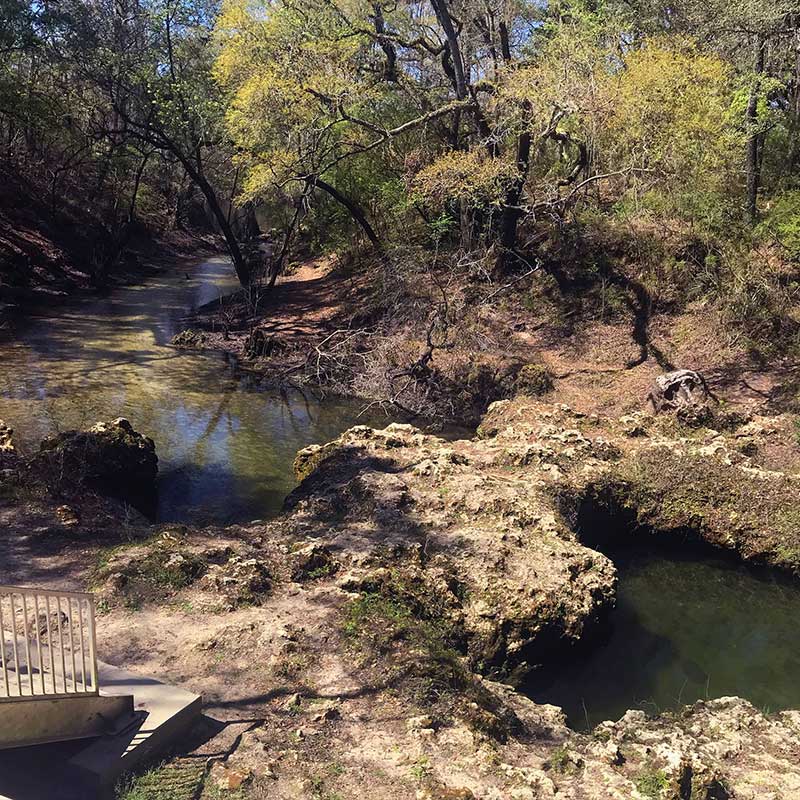
Charles Springs
These springs are hard to find–and at the end of a long sand road– but that was great because it meant we had the place to ourselves. There is a boat ramp to access the Suwannee and some picnic tables, but otherwise, it’s undeveloped. The spring is surrounded by trees and features and natural limestone bridge across the pool; you can’t swim under it, but we had fun sitting on it and swinging our legs over the water while we relaxed in the shade.
Charles Springs is very remote, peaceful and relaxing. It was a great way to kick back and reminisce about our three-day adventure–and plan our next visit.
Best For: Relaxing | Swimming | Exploring

